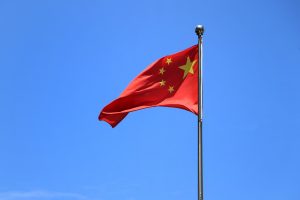The Diplomat author Mercy Kuo regularly engages subject-matter experts, policy practitioners, and strategic thinkers across the globe for their diverse insights into U.S. Asia policy. This conversation with Cortney Weinbaum, senior management scientist at the RAND Corporation in Washington, D.C. and co-author of the RAND report, “Assessing Systemic Strengths and Vulnerabilities of China’s Defense Industrial Base” (2022), is the 341st in “The Trans-Pacific View Insight Series.”
Describe the role and reach of state-owned enterprises (SOEs) in China’s defense industrial base.
China’s defense industrial base (DIB) relies heavily on SOEs, and this dynamic presents both advantages and vulnerabilities for China. The main benefits are that Chinese leadership ̶ President Xi and CCP party leaders ̶ can direct SOEs to prioritize and invest in the areas that the government’s leaders are most interested in. Party leaders often sit in leadership roles of SOEs such as on the boards ̶ and this relationship gives the government inside access to the SOE’s business. This is an enormous strength in how the state can direct industry’s decision making, but the transparency is not as ideal as it might seem.
The vulnerabilities to China of this relationship are multi-faceted. First, when each SOE has an effective monopoly on a technology area ̶ one SOE for ship-building, another for ground warfare equipment, another for aircraft, etc. ̶ the companies lack competition in pricing and innovation. The urge to be price competitive with competitors or to be more innovative than competitors is absent when a supplier has no competitors. Both factors create systemic vulnerabilities in the DIB.
Second, these factors are exacerbated by a lack of quality assurance standards, according to our team’s research. We found a lack of evidence that China has quality standards that it holds its DIB suppliers to, and such lack of standards and lack of quality assurance reporting creates a lack of transparency that cannot be overcome simply by a party member sitting in board meetings.
What is the scope of China’s share of defense-related minerals for dual-use manufacturing?
China has a strong position on defense-related minerals, and there is no way to sugarcoat that fact. Our team examined minerals with defense applications that are concentrated in a few countries in the world, compared to minerals that are widely available. For example, oil is a widely available resource; it is important for military use, but no one country could easily block another country’s access because there is simply too much oil available from too many sources in the world. When our team examined all the minerals in the world that are concentrated, unlike oil, we found that China has control of half (or 18) of all concentrated minerals with defense applications. For the remaining half, 14 of them are concentrated in countries where China has strong economic and security ties, including Russia, South Africa, Congo, and others. This puts China at a huge advantage in both their access to these minerals and opportunities to restrict access to countries it desires to restrict.
Examine the technology relationship between China’s DIB and the United States.
China has become a science and technology (S&T) powerhouse, and we have every indication that this translates into its DIB. China has no distinction between defense-related and non-defense enterprises; any enterprise exists to benefit the state, allowing S&T innovations in any organization to be accessed by the military. China’s technology development remains strong when measured in academic journal articles published on defense-related scientific advancements and in new patents for military technologies. But Beijing’s S&T vulnerabilities exist elsewhere.
China remains dependent on imports for technologies that Beijing would prefer to produce domestically but cannot. These include integrated circuits, computer numerical control milling machines, and precision measurement tools, such as photo-optical image readers; along with military engines. Further, many of these technologies are being imported into China from regions that are allied with the U.S., including South Korea, Taiwan, and Japan. Meanwhile, China is heavily reliant on Russia for its engines, and it is unclear how the war in Ukraine might change the availability of Russian engines for export.
Analyze the strengths and vulnerabilities of China’s innovation ecosystem.
Our team examined how “innovation” allows China’s scientists to make discoveries, then to transition these discoveries into new technologies. China’s patenting of new military technologies is strong ̶ and stronger than the U.S. for some technologies ̶ but our analysis showed that it is unclear how well China transfers patents into military equipment success.
One possible reason for this challenge is that China’s innovation system is more centralized than in the U.S. ̶ a symptom of the state’s control ̶ and this centralization results in fewer scientific collaborations across organizations. The stymieing of collaboration, along with the professional fear of failure created by living in an authoritarian regime, may result in fewer scientists demonstrating entrepreneurial behaviors. China may continue to rely on technology imports for longer than the government desires if it cannot develop domestic capabilities to produce the technologies that the PLA wants.
Assess the strategic implications of emerging trends and risks in China’s DIB development over the next 10 years for U.S. China policy.
China’s leaders seem committed to making improvements in China’s defense-manufacturing base and technology ecosystem, and they are unlikely to change course easily. China will seek technology advances anywhere it can get them, including from scientists based in the U.S. A recent report about Chinese talent programs potentially accessing nuclear technology from 154 scientists at Los Alamos National Lab demonstrate China’s investment and skills in siphoning S&T from the U.S.
In addition to these tactics, which the U.S. struggles to counter, China’s DIB will surely continue to develop differently than the U.S.’ DIB. We have already seen China investing in different areas of quantum computing technology than the U.S. and aggressively building its space capabilities, and the U.S. responding with its own counter-investments and policies.































